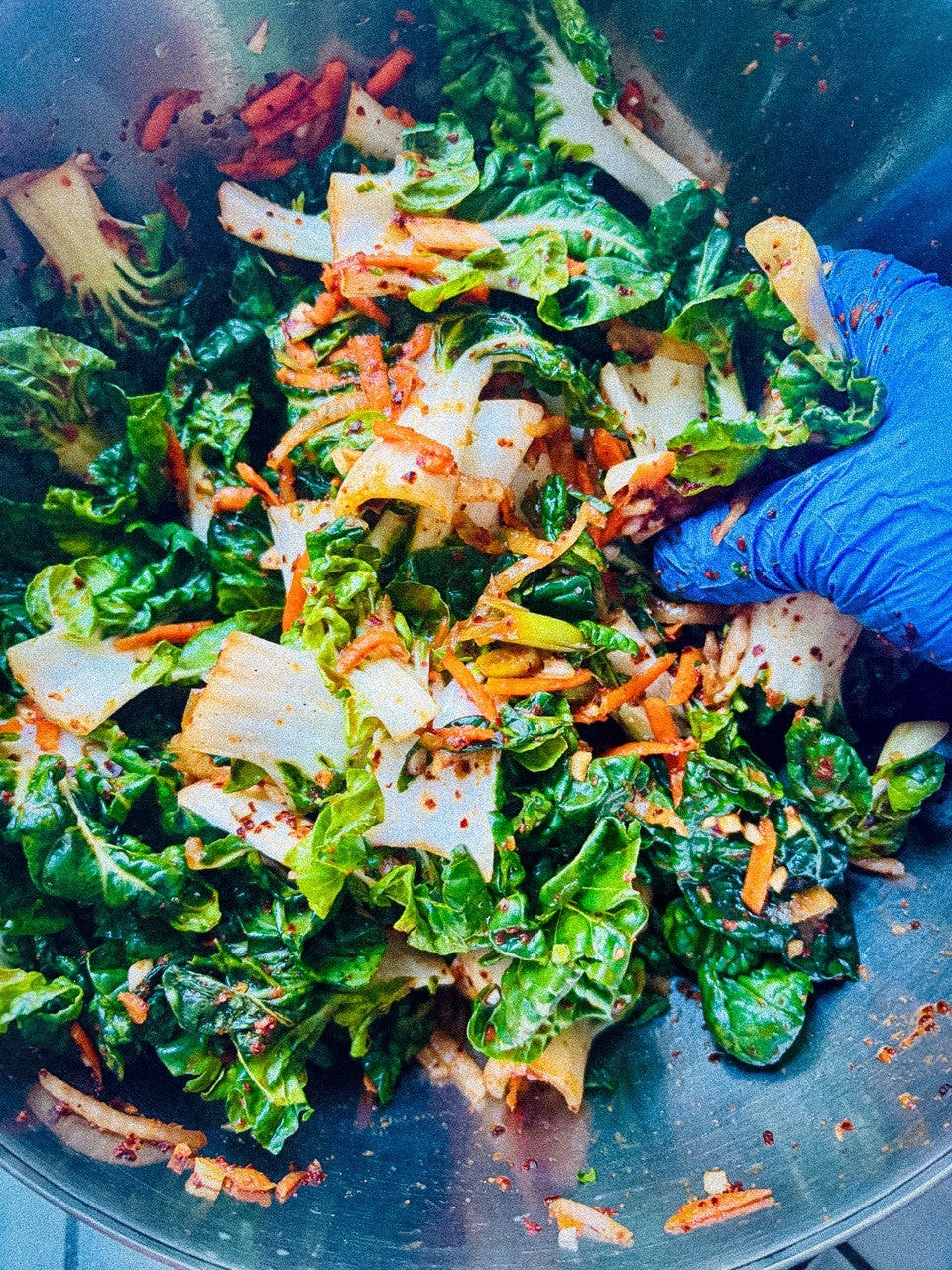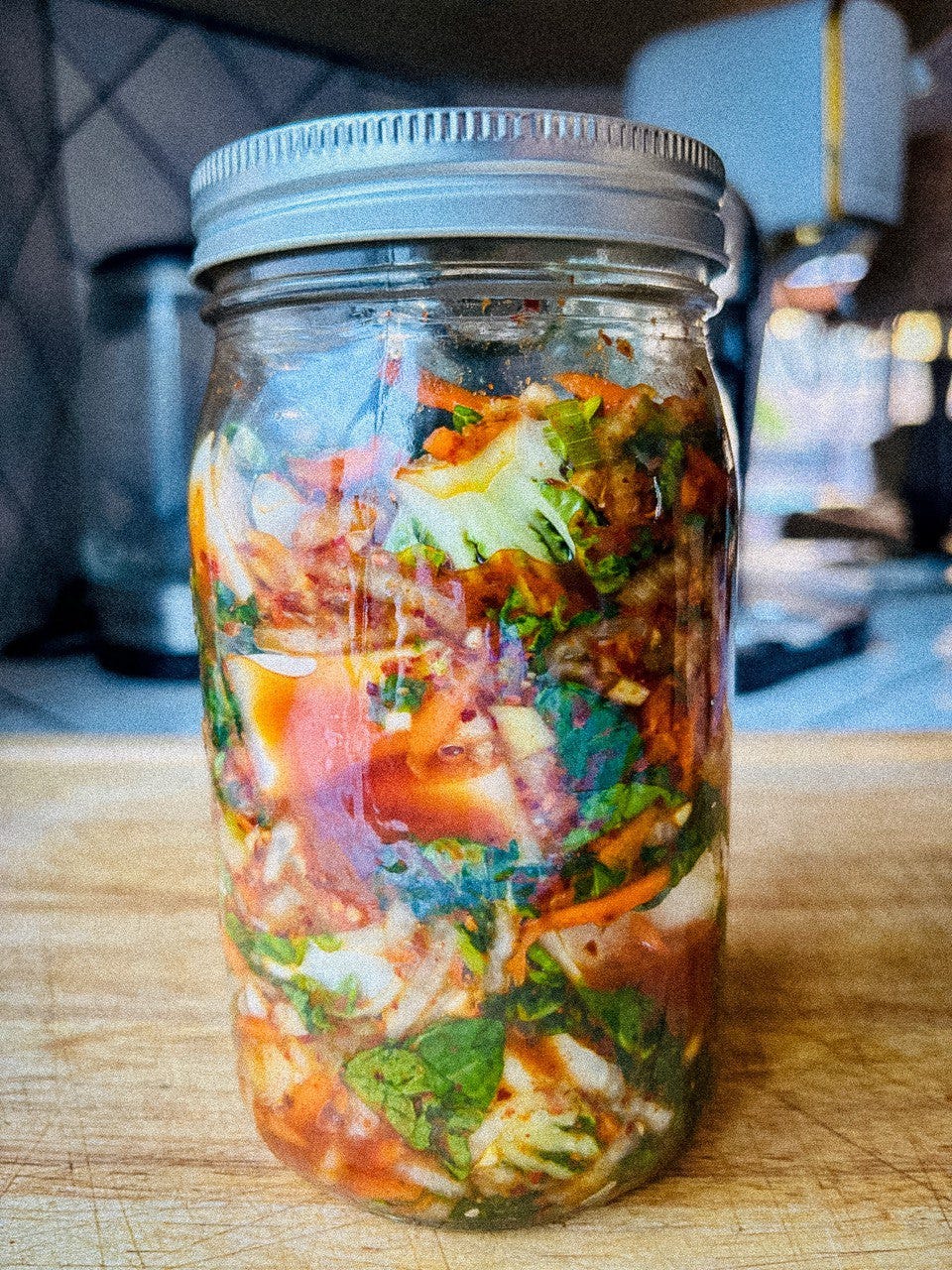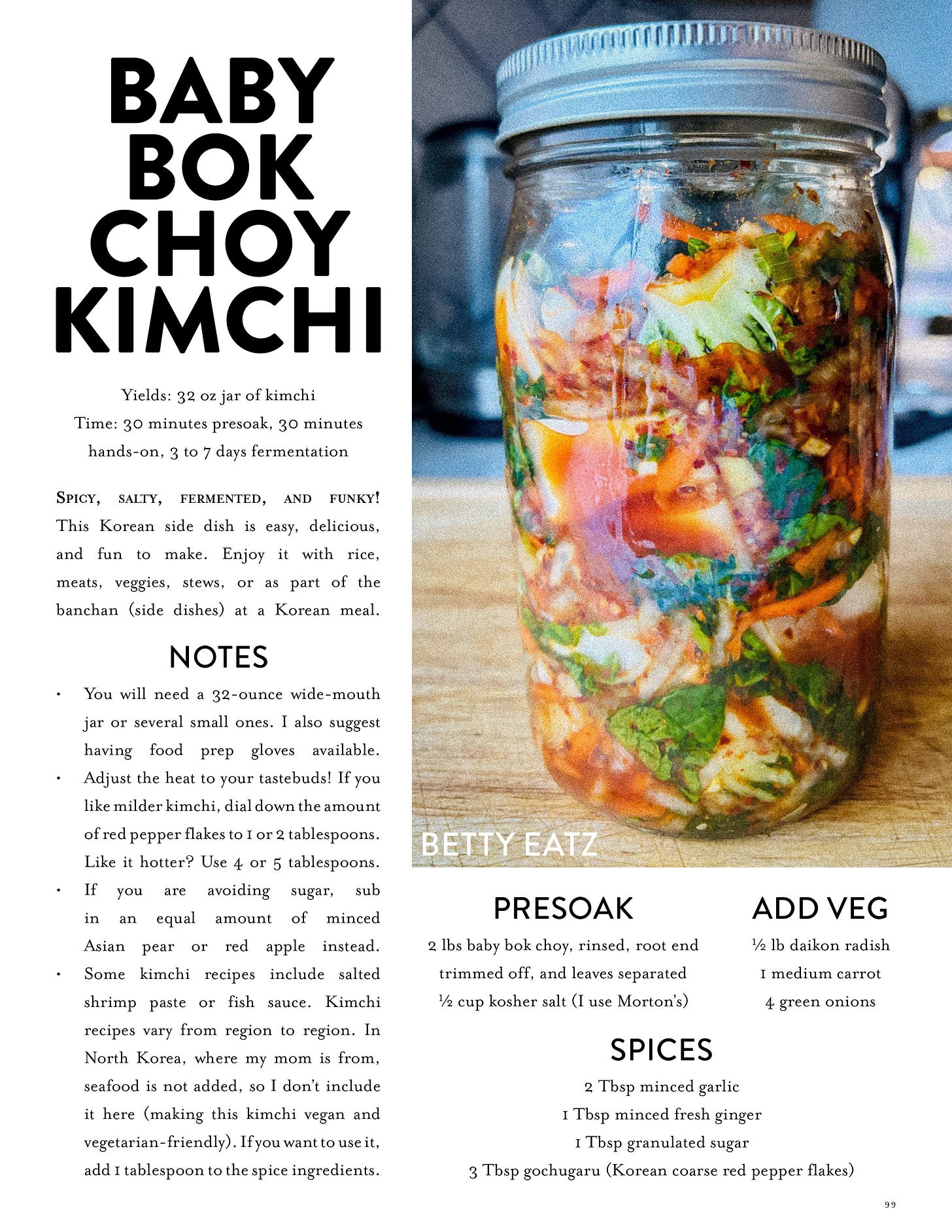You need to be making kimchi
Betty's Baby Bok Choy Kimchi Recipe
Yields: 32 oz jar of kimchi
Time: 30 minutes presoak, 30 minutes hands-on, 3 to 7 days fermentation
Spicy, salty, fermented, and funky! This Korean side dish is easy, delicious, and fun to make. Enjoy it with rice, meats, veggies, stews, or as part of the banchan (side dishes) at a Korean meal.
Before we get into the recipe, here are some notes:
You will need a 32-ounce wide-mouth jar or several small ones. I also suggest having food prep gloves available.
Adjust the heat to your tastebuds! If you like milder kimchi, dial down the amount of red pepper flakes to 1 or 2 tablespoons. Like it hotter? Use 4 or 5 tablespoons.
If you are avoiding sugar, sub in an equal amount of minced Asian pear or red apple instead.
Some kimchi recipes include salted shrimp paste or fish sauce. Kimchi recipes vary from region to region. In North Korea, where my mom is from, seafood is not added, so I don’t include it here (making this kimchi vegan and vegetarian-friendly). If you want to use it, add 1 tablespoon to the spice ingredients.
Ingredients
Pre-Soak
2 lbs baby bok choy, rinsed, root end trimmed off, and leaves separated
1/2 cup kosher salt (I use Morton’s)
Additional Vegetables
1/2 lb daikon radish
1 medium carrot
4 green onions
Spices
2 Tbsp minced garlic
1 Tbsp minced fresh ginger
1 Tbsp granulated sugar
3 Tbsp gochugaru (Korean coarse red pepper flakes)
Method
Prep a clean 32oz wide-mouth mason jar by filling it with boiling water all the way up to the brim. Allow to sit for 10 minutes, then dump the water and let the jar air dry. I like to have an extra 16oz jar prepped and ready as well, in case I need it.
Presoak to soften the bok choy. Place the leaves in a large bowl and sprinkle on the salt, getting it between the leaves. It seems like a lot of salt, but most of it will be rinsed away. Fill the bowl with water until the leaves are submerged. Place a plate or pot lid on top to keep everything below the water line. Let it sit for 30 minutes.
Near the end of the soaking time, cut the other veggies. Trim and peel the daikon radish and carrots, then grate on a box grater. Trim the green onions and slice diagonally into small pieces.
Tip the spice ingredients (garlic, ginger, sugar, and gochugaru) into a very large bowl. Throw in the radish, carrots, and green onions. Stir everything together to combine.
Drain the bok choy, reserving 1 cup of the salty water. Rinse leaves with clean water. Cut any large leaves into bite-sized pieces (around 1 1/2 inches). Add to the bowl with the other veggies and spice mix.
It’s time to put on those food prep gloves (you’ll thank me later!). Using your hands, mix and massage the veggies and spice mix together, lightly squeezing everything to combine. Add 1/4 cup of the reserved salty water and massage again.
Pack the kimchi into the prepared mason jar. Fill the jar about halfway, then press down on the mixture to compact it and release the liquid. Continue filling the jar, pressing down on the veggies as you fill. Pour any accumulated juices from the bowl into the jar as well. Leave about 1 1/2 inches of headroom (don’t pack it to the brim). If everything doesn’t fit, this is where that extra smaller jar comes in handy. Pack that one too, if needed.
Give the packed veggies one last press. Is there enough liquid to keep everything submerged? If not, add a little of the reserved salty water.
Place a glass fermentation weight directly on top of the veggies to keep everything submerged under the liquid. This helps prevent mold from forming on any exposed veg. Alternatively, a sealed Ziploc bag filled with pie weights works well, too.
Screw on the lid. Place the jar on a pie plate to catch any liquid overflow. Leave at room temperature (70 F/21 C) for 3 to 7 days. Check on the kimchi every other day and remove the lid to release some gas, then put the lid back on.
By day 3 or 4, you should start to see regular bubbles, which means fermentation is happening! It’s time to move the jar to the refrigerator, where fermentation will continue (but more slowly), and the flavors will mellow with time. And yes, at this point you can eat the kimchi! It keeps in the fridge for several months.
This recipe was written by Betty Williams. For more recipes, subscribe to the BettyEatz newsletter here. You can also reach her on Instagram @betty_eatz and explore her full recipe archive at bettyeatz.com.
This piece was first published in Issue 39 of the WARKITCHEN. Read the full issue here. Explore the full WARKITCHEN archive here. Enjoy the experience 🥂










Made this a couple weeks ago with all the veggies coming from our CSA! I haven't tried it yet but it looks delicious.
Thanks for the recipe!